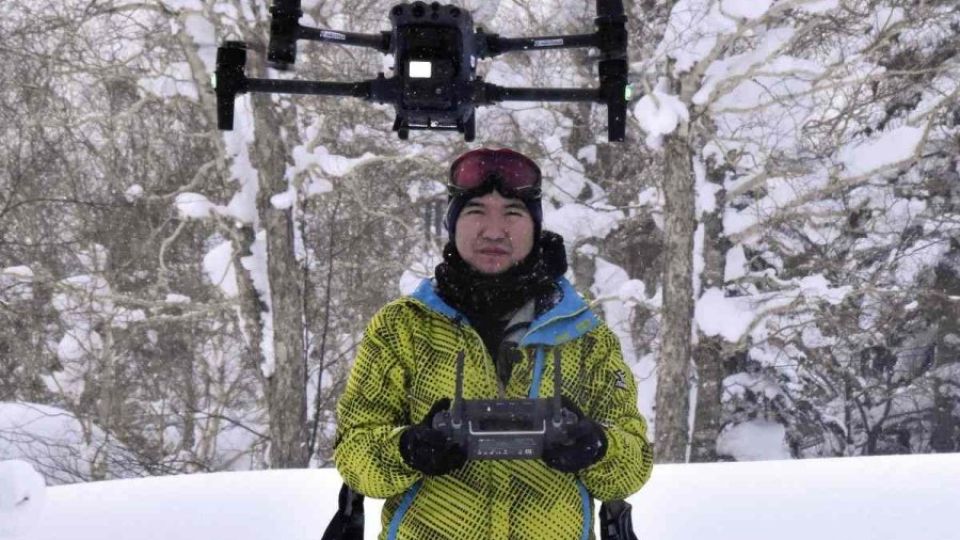February 20, 2023
ASAHIKAWA, Hokkaido — As small drones are considered vulnerable in cold weather, the Hokkaido prefectural government has started a project to demonstrate the flying of drones in winter.
Through this project the prefectural government aims to build up expertise to safely use drones in snowy weather and freezing conditions, promote their use and compile guidelines.
On Feb. 8, a demonstration was held under the scenario that a man had been in an avalanche. The weather that day was minus 12 C and snowing at the Asahidake spa resort area in the town of Higashikawa, Hokkaido.
In the harsh subzero temperatures, the challenges were the rapid depletion of the battery and the freezing of the propellers.
Before the test flights, participants checked that there were no other people around and that the camera and propellers on their drones were not covered with snow or dirt. They then double-checked the safe flight procedures.
During the demonstration, a drone searched for the man in the scenario from about 50 meters aboveground. Equipped with a regular camera and a thermal camera, the drone successfully found the person by detecting the man’s body heat.
For an actual accident, the location of the victim would be relayed from the drone to members of a mountain rescue unit of the Hokkaido prefectural police and others to initiate the search and rescue operation.
Compared to helicopters, the preparation time for flying drones is shorter, and searches can be done at lower altitude, leading to the early detection of victims.
As deregulation continues regarding drone flight rules, the Hokkaido prefectural government also hopes to use drones for logistics and infrastructure development. The prefectural government said that they would conduct demonstrations in the towns of Kamishihoro and Tobetsu on the assumption that drones could be used to deliver relief supplies when roads and other access lines are cut off and to inspect avalanche fences and dams.
“We would like to continue demonstrations so that drones will be used in various sectors during winter,” said Hiroshi Nakagawa of NTT Communications Corp., who is involved in the project.

